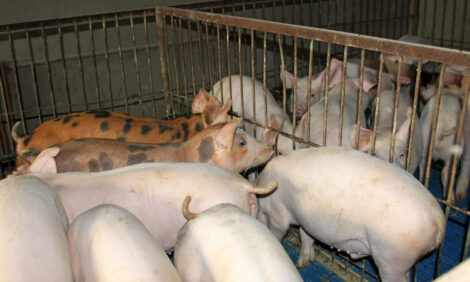



Activity of Bacterial Effector Protein in Molecular Detail
UK - Many plant and animal pathogens deploy molecules called 'effector proteins' as part of their 'molecular arsenal' to help them to infect and colonise their hosts. New research has revelaed the structure of a bacterial effector molecule bound to its target protein in the host. This understanding could help us combat bacterial pathogens.Gram-negative bacterial pathogens can deliver these effector proteins directly into host cells through a specific secretion system. These can then manipulate host cell processes for the benefit of the pathogen. The host cell processes targeted by effectors and the mechanisms used for manipulation are diverse. Knowledge of how effectors interface with host cell molecules is critical for understanding both mechanisms of pathogenesis and how effectors could be used to deliver new insights into host cell biology.
Dr Mark Banfield at the John Innes Centre, funded by a grant from the Biotechnology and Biological Sciences Research Council (BBSRC), has uncovered the structure of a bacterial effector molecule called 'Cif' bound to its target (NEDD8) from the host. The Cif effector is found in a number of pathogenic bacteria including strains of E. coli, Burkholderia, Photorhabdus and Yersinia species.
Delivery of Cif into host cells results in perturbation of the cell division cycle. One hypothesis suggests this could prevent rapid renewal of infected cells such as those in the lining of the gut, so helping bacterial colonisation. Researchers at the John Innes Centre also studied the enzymatic activity of the effector protein in solution, and in collaboration with Drs Taieb and Oswald, who are based in Toulouse, France, in model host cells.
Their work, publishing in the Proceedings of the National Academy of Sciences Online Early Edition, used protein structure determination to reveal the interface formed between the bacterial effector and the host target. The knowledge of this interface at the molecular level allowed small, directed changes to be made to the effector to determine the regions of the interface important for the interaction and the enzymatic activity in solution and in cells.
A thorough understanding of how this effector acts at the molecular level not only provides new information about the virulence mechanisms used by pathogens, it also suggests ways in which these effectors could be used as tools to probe functions related to the cell cycle, and how this relates to cellular biology.







